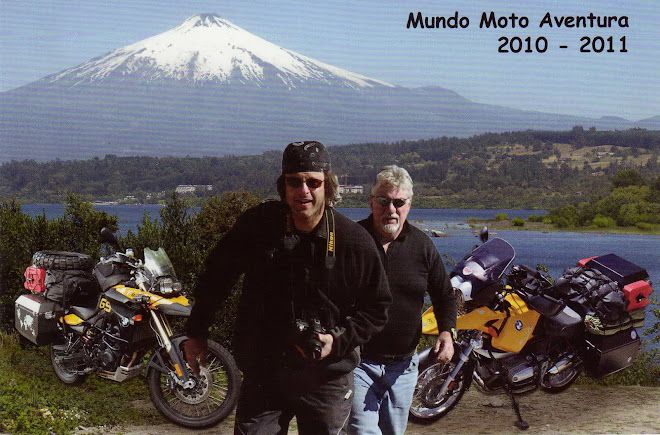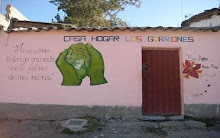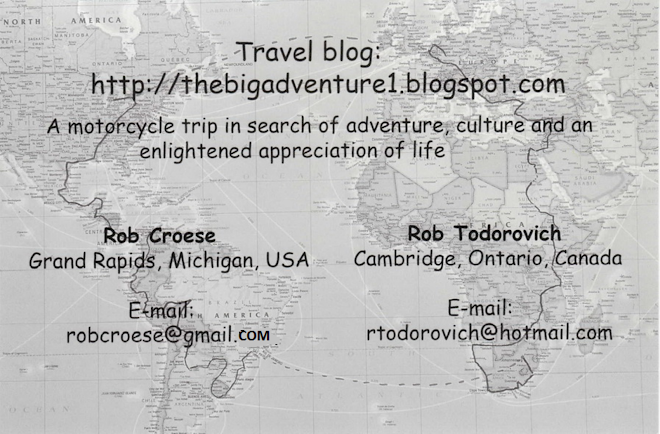Ah, today we will be rid of this horrendous road!! Thank God. 2 more hours of gravel. We were also told that asphalt awaits 70 km down the road (2 hours). We forgot about that while we were battling all manner of obstacles on a less than stellar road. We rounded a corner and noticed asphalt. Mirage? We couldn’t believe our eyes! But ... Coroico was off to the left and the final 35 km of Death Road (packed gravel of sorts) awaited. It was very tempting to stay on the beautiful asphalt and head for La Paz (100 km), but we turned around for some more punishment and entered Coroico via a long cobblestone back road from the north. With the new asphalt road in existence, this back road was no longer maintained. Ruts and vegetation growing over the road.
RobC on the first part of El Camino de la Muerte (the Death Road)
Yup, that's the road up there in the cut-out.
Someone's home along the roadside.
You get some perspective with that white truck on the road.
The plaza in Coroico
Bienvenidos a Coroico ... we were here three years ago as well, but this time we are here with our own bikes.
We had some food and changed money in the plaza ... we were ready for the last part - the famous Death Road. We were here three years ago and at that time it was raining and cloudy so we didn’t see much aside from the road itself. This is also known as the North Yungas Road, not too long ago the only connection from La Paz to the northern Bolivian jungle. In 1995, the Inter-American Development Bank christened it the "world's most dangerous road" due to the road conditions, such as: single lane, rock, gravel, no guard rails, water falls onto the road, streams running across it, sheer drops and the number of deaths per year, which some estimate at 200 before the new road was built about 5 years ago.
The start of the road as seen from Coroico.
RobC giving a tour operator a piece of his mind (RobT edit: "shit", not "a piece of his mind". RobC is just being courteous so as not to offend anyone) as we had almost hit 3 mountain bikers coming down the road on the wrong side. You could see the fear in their eyes as they passed, concentrating on not going over the edge.
One of several spots along the road where crosses designate where someone had gone over the edge and perished.
RobT's bike. The view was staggering!
RobC traveling past a water fall on the road.
Closer view.
We had previously made fun of the Death Road, saying that we have been on far worse roads in Peru, etc. We now stand corrected. After having ridden it again in sunshine we both can safely and unequivocally say it is worthy of its name. What a road!!
After completing the Death Road (alive) we made it t the new paved road and through La Paz (highest capital city in the world at) with relative ease and headed south for the town of Oruro. We passed some familiar Altiplano territory (from three years ago) as the remainder of the day wore on.
Waiting for a bus. That's the major means of travel for most Bolivians.
After completing the Death Road (alive) we made it t the new paved road and through La Paz (highest capital city in the world at) with relative ease and headed south for the town of Oruro. We passed some familiar Altiplano territory (from three years ago) as the remainder of the day wore on.


























No comments:
Post a Comment